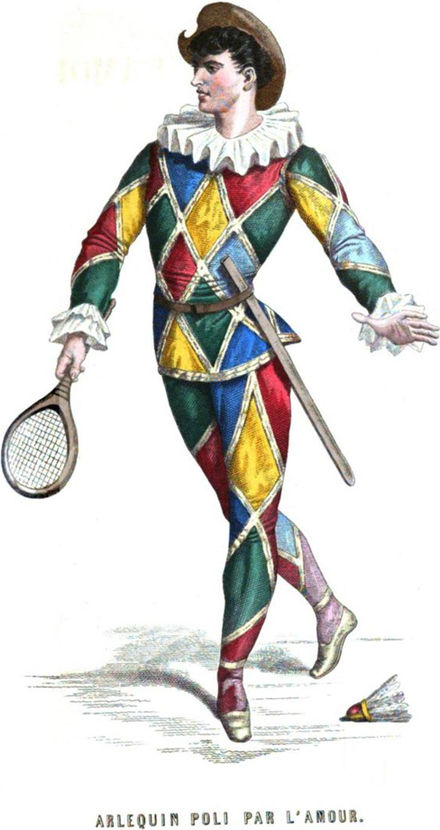Harlequin print
Harlequin print is a repeating pattern of contrasting diamonds or elongated squares standing on end.
The harlequin is a character from Commedia dell'arte, a 16th-century Italian theater movement. Harlequins were witty, mischievous clowns. Their early costumes were sewn together from fabric scraps. Over time, the diamond pattern became associated with harlequins.[1]
Harlequin fabric was popularized in 1944 when Adele Simpson presented the harlequin print in a bold diamond design on the town suits she created. It was also featured in green and white with a green jacket and a black skirt.[2]
Also in 1949, Louella Ballerino employed a harlequin print motif in the jester blouse "sun and fun" fashions she made popular. The design appeared along with pointed collars, tipped with buttons reminiscent of bells, and jagged points which sometimes adorned an apron overskirt.[3]
In August 1950, Fashion Frocks of Cincinnati, Ohio marketed a white piqué dress, with an exaggerated side drape, in a red, white, and black harlequin print piqué, It was sold directly to homes by housewife representatives.[4]
Tammis Keefe, a cloth designer whose patterns appeared at Lord and Taylor in September 1952, used a harlequin print diamond pattern on a large cloth she crafted for a table setting show.[5]

_dressed_as_a_harlequin,_attributed_to_John_Ellys.jpg/440px-Mrs_Hester_Booth,_nee_Santlow_(circa_1690–1773)_dressed_as_a_harlequin,_attributed_to_John_Ellys.jpg)
